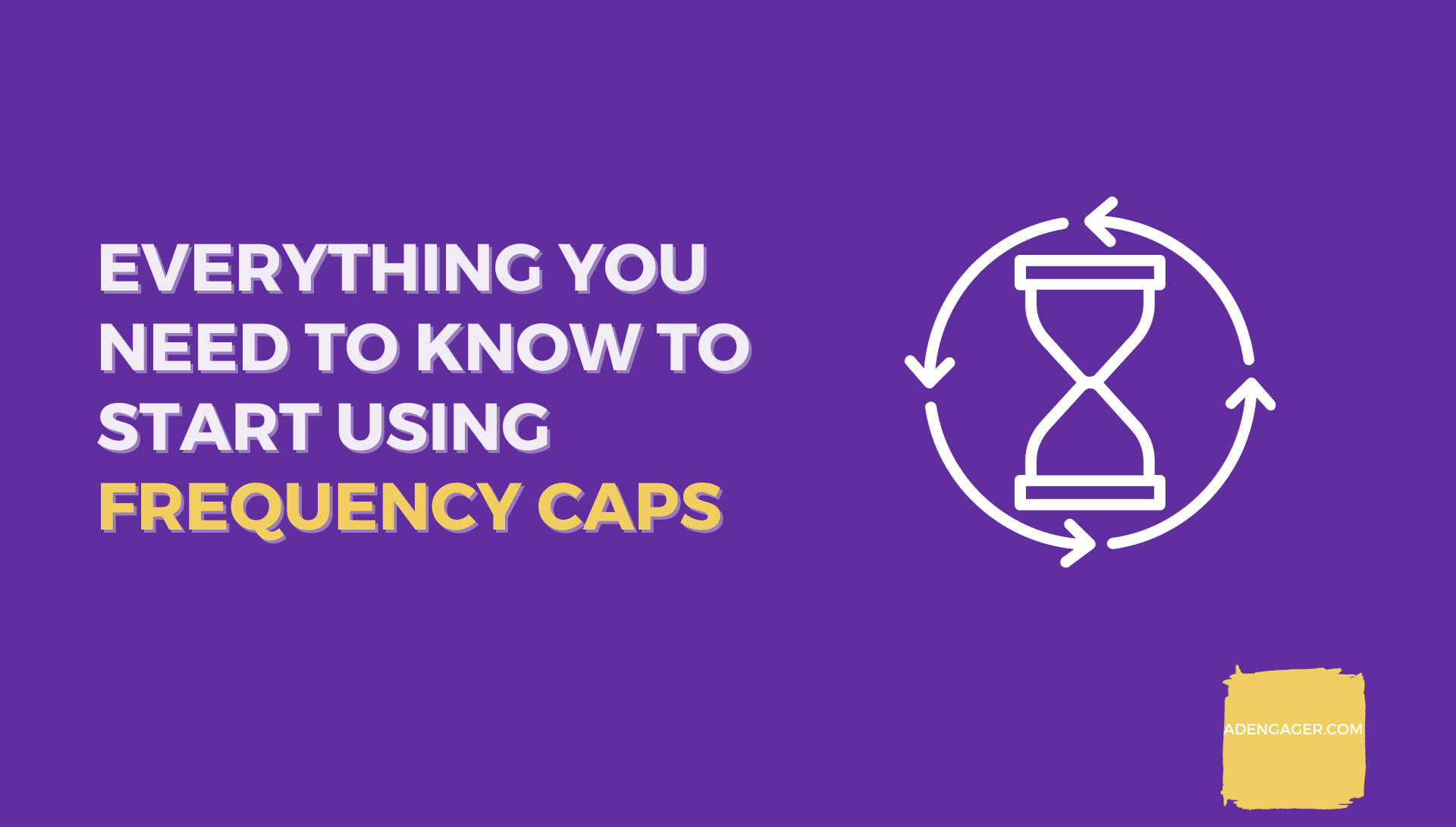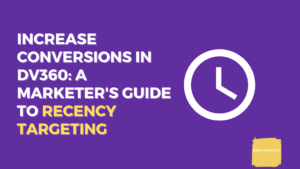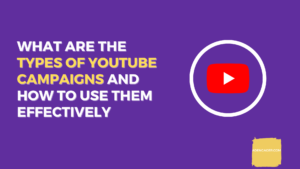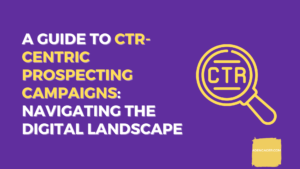Frequency Caps: Your Quick Start Guide to Managing Ad Impressions

In simple terms, frequency capping lets you limit how many times each unique user sees your ads over a given period of time. The reason we use it for programmatic campaigns is to prevent “ad fatigue” from showing ads too much.
Imagine you’re a user browsing online and the same ad pops up 10+ times in an hour. You’d probably get pretty annoyed, right? Well, frequency capping helps advertisers avoid that by capping each user’s ad exposure.
Now, you might be wondering – how do I choose the right cap? My advice is to start low, like 3-5 impressions per day, and test higher and lower caps from there. Monitor how changes impact your KPIs. You want to find the sweet spot before fatigue sets in.
Setting caps across too long of a timeframe can also reduce impact. I’d recommend daily or weekly caps to start. Get those ad views concentrated in a short window when possible.
One mistake I see is using ultra-low caps hoping to “stretch” a small budget. That often backfires by limiting campaign reach and performance. Leave some room for users to see ads a few times at minimum.
Beyond just setting caps, it’s important to actively optimize based on results. If you see engagement dropping at higher frequencies, tighten your caps. Or vice versa – if more impressions keep improving clicks, try raising your limits.
Like any programmatic tactic, frequency capping requires monitoring, refinement and a test-and-learn approach. Use it thoughtfully, and it can noticeably boost your campaign ROI. Hope this gives you a better sense of how to make frequency capping work for you.
How Frequency Capping Works
On a technical level, frequency capping relies on cookies to track how often a specific user sees your ads. Cookies are tiny bits of data that get stored in someone’s browser when they visit sites or see ads.
Your ad platform uses cookies to recognize return visitors and count their ad impressions for capping. For example, if you set a cap of 5 times per day, the platform won’t serve that user more than 5 of your ads in a 24 hour period. Pretty slick!
Now it’s important to understand frequency caps limit how often each ad is shown, not your overall reach. You may caps ads at 3 impressions per user, but still reach 1 million different people. Caps don’t restrict audience size.
Some common metrics used for frequency caps:
Impressions – Maximum impressions per user for a time period
Reach – % of audience exposed at least once
Effective Reach – % exposed at optimal frequency
You’ll usually be balancing frequency vs reach. Lower caps = fewer impressions per user but potentially higher reach. Vice versa for higher caps.
I recommend testing both impression and reach metrics to optimize frequency. Look at post-click engagement too – are users less likely to convert after seeing too many ads?
And remember, cookies have limitations. They get deleted, people use multiple devices, etc. So take the caps as general guidance but not absolute.
Benefits of Frequency Capping
First, it reduces ad fatigue. We all know what happens when you see the same ad over and over. You get annoyed and start tuning it out. Frequency caps prevent oversaturation so your ads stay fresh.
Imagine you cap video ads at 2 impressions per visitor daily. They’ll see it a couple times when they’re most receptive, without getting sick of it. Moderation is 🔑.
Second, capping allows you to control budget pace and investment. Caps let you optimize daily/weekly spend on each user based on their potential value.
For example, high-funnel brand ads you may cap higher to drive awareness. But low-funnel retargeting ads should have lower caps to conserve budget. Make sense?
And third, done right, frequency capping will almost always improve campaign performance! More efficient spending means better results.
In my experience, moderate caps on display and video cut waste by 50%+ easily. And I’ve seen caps on retargeting improve CTR and conversion rates significantly.
The key is actively managing caps based on performance data. Reduce any excess frequency that starts diluting metrics. Stay on top of it, and your ROI will thank you!
So in summary – reduced fatigue, optimized spend, and performance gains
Drawbacks of Frequency Caps
Frequency caps ultimately limit your potential reach. Lower caps = fewer impressions per user. So you may need more users to hit impression goals.
But don’t stress about this too much. Marginal reach rarely offsets the gains from reduced fatigue and waste. Just factor it into plans.
Second, cookie-based caps come with technical limitations. Cookies get deleted, people browse across devices, they’re blocked by some browsers.
So caps give a good guideline, but aren’t foolproof. You may need supplementary tactics like IP address tracking to fill gaps.
And third, frequency capping requires active optimization. You need to regularly review data on engagement at different caps.
If you set and forget, you’ll miss chances to optimize. Stay on top of metrics and tweak caps to drive performance.
None of those drawbacks outweigh the benefits of course. But being aware helps you plan around them.
For example, start with broader targeting to account for reach. Supplement with IP tracking. And schedule time every week to analyze caps and fine tune.
Tips for Setting Frequency Caps
When it comes to choosing cap numbers, there’s no one-size-fits-all answer. But I have a few tips that can help guide your strategy:
First, always consider your overall campaign objectives. Are you driving awareness? Focus on reach. Optimizing conversions? Lower caps to avoid fatigue.
Match your caps to objective KPIs. High-funnel goals need higher frequencies. Lower-funnel goals call for tighter caps.
Second, test multiple caps and optimize based on performance data. I’d suggest starting with a reasonable guess then trying higher and lower caps.
For example, test a 7 impression daily cap against 3, 5 and 10. Monitor engagement at each level to identify the sweet spot.
No need to complicate this – just set up A/B tests and let the numbers guide your optimization. Then scale what works.
And third, research suggests an “ideal” frequency for media types. Use 3-5 caps for display, 2-3 for video, 1-2 for native ads. Align with benchmarks.
Of course still test caps tailored to your goals. But those averages are a good starting point for your experiments.
Optimizing frequency caps takes some diligence and an iterative approach. But it’s one of the fastest ways to boost campaign performance
The Future of Frequency Capping
As we wrap up, I want to touch on what’s next for frequency capping. This stuff is always evolving in our industry!
The big change on the horizon is the impact of privacy updates and cookie loss. As Chrome phases out cookies, tracking user-level frequency gets more difficult.
So we’ll need new solutions to maintain capping capabilities. That’s spurred innovation in workarounds like contextual targeting and cohort modeling.
For example, you may not be able to track “John S.” anymore. But you can infer frequency patterns by looking at groups with similar browsing behavior to John.
There are also emerging identifier solutions from partners like The Trade Desk and LiveRamp. These can create anonymous, persistent IDs to replace cookies.
The coming months will bring lots of testing and learning around new frequency approaches. As marketers, we’ll need to stay adaptable and keep improving our game.
But I’m optimistic that frequency capping will remain viable and important. Even without cookies, the incentives to manage ad fatigue won’t go away.
New solutions may never be perfect. But they’ll get better over time as technology evolves. And we’ll get smarter about how to make the most of them.
So while the cookieless future will disrupt things, it’s also an exciting time for innovators in our field. We’ll find ways to keep providing valuable experiences for customers.
The core principles of frequency capping aren’t going anywhere. We just have to adapt the technical execution. And I can’t wait to see what’s coming next!
Key Takeaways
And that wraps up my marketer’s guide to frequency capping! To recap the key points:
Frequency capping helps avoid ad fatigue by limiting user impressions. Moderation is key for performance.
Caps are technically implemented using cookies to track unique users across sessions. But cookies have limitations to be aware of.
Benefits include reducing budget waste, optimizing spend, and boosting campaign results. But caps can constrain reach if set too low.
Start with reasonable caps based on objectives and channels, then actively test and optimize. Let performance data guide your frequency strategy.
Monitor engagement at each cap level to identify the ideal balance of reach and repetition for your goals.
As cookies go away, new solutions will emerge to maintain frequency management capabilities. Marketers will need to stay agile and adaptable.
When used thoughtfully, frequency caps give you more control over budget pacing and audience experience. The future will bring new ways to reduce ad fatigue.
There you have it – a comprehensive guide to frequency capping and how to make it work for your programmatic campaigns.
Hopefully this gives you a game plan for implementing effective caps tailored to your needs. Feel free to reach out if you need any help strategizing or want to geek out more on future capping solutions!






